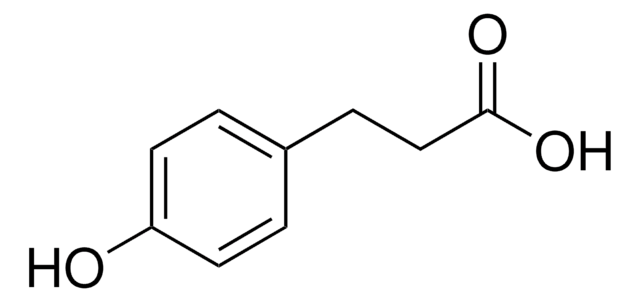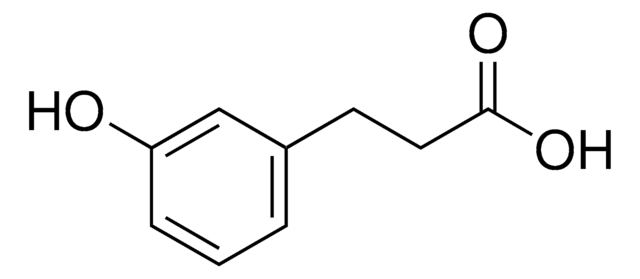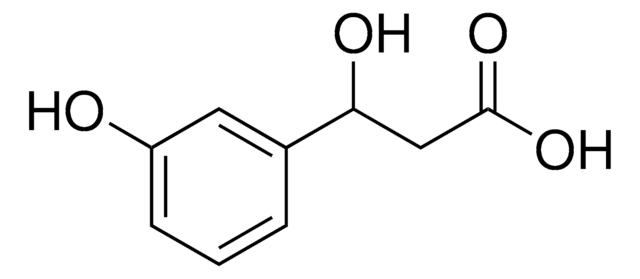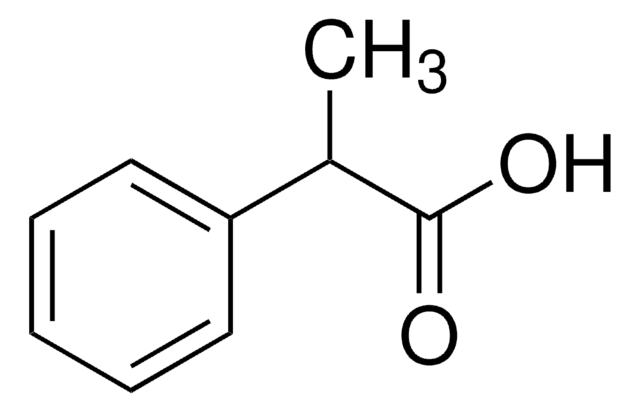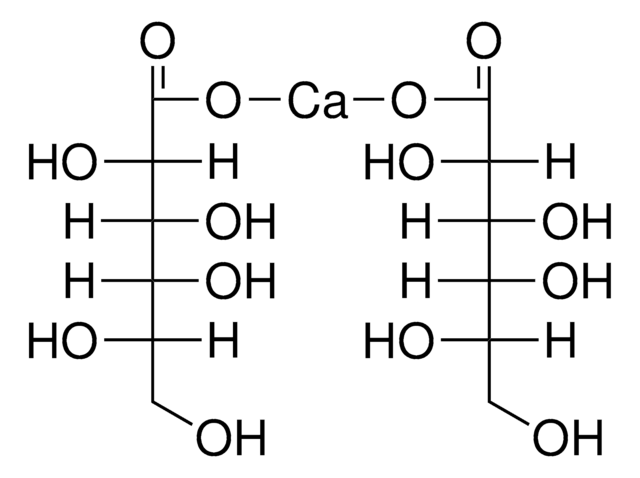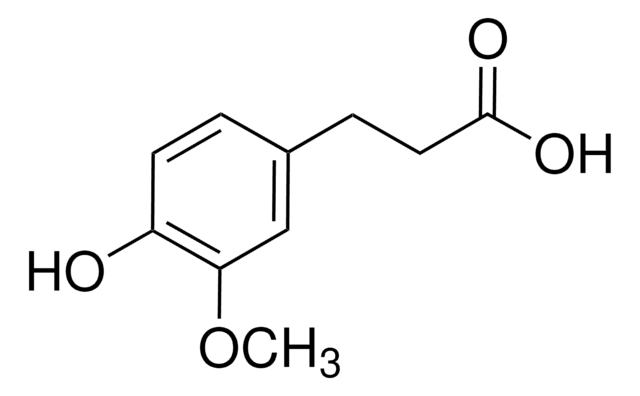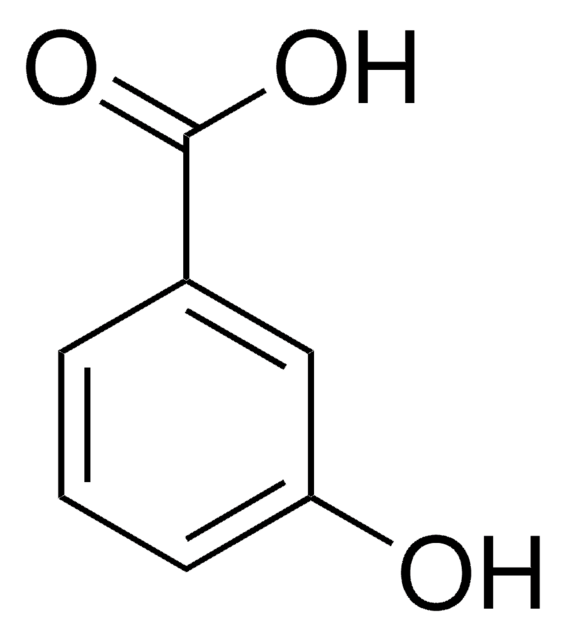91779
3-(3-Hydroxyphenyl)propionic acid
analytical standard
Sinonimo/i:
3-(3-Hydroxyphenyl)propanoic acid, NSC 33135, NSC 39468
Autenticatiper visualizzare i prezzi riservati alla tua organizzazione & contrattuali
About This Item
Formula empirica (notazione di Hill):
C9H10O3
Numero CAS:
Peso molecolare:
166.17
Beilstein:
1947445
Numero CE:
Numero MDL:
Codice UNSPSC:
12352200
ID PubChem:
NACRES:
NA.24
Prodotti consigliati
Grado
analytical standard
Livello qualitativo
Saggio
≥98.0% (HPLC)
Durata
limited shelf life, expiry date on the label
applicazioni
clinical testing
Formato
neat
Stringa SMILE
OC(CCC1=CC=CC(O)=C1)=O
InChI
1S/C9H10O3/c10-8-3-1-2-7(6-8)4-5-9(11)12/h1-3,6,10H,4-5H2,(H,11,12)
QVWAEZJXDYOKEH-UHFFFAOYSA-N
Azioni biochim/fisiol
3-(3-Hydroxyphenyl)propanoic acid is one of the major metabolites of ingested caffeic acid and of the phenolic degradation products of proanthocyanidins (the most abundant polyphenol present in chocolate) by the microflora in the colon. 3-(3-Hydroxyphenyl)propanoic acid is suspected to have antioxidants properties and is actively absorbed by the monocarboxylic acid transporter (MCT) in intestinal Caco-2 cell monolayers.
Codice della classe di stoccaggio
11 - Combustible Solids
Classe di pericolosità dell'acqua (WGK)
WGK 3
Punto d’infiammabilità (°F)
Not applicable
Punto d’infiammabilità (°C)
Not applicable
Scegli una delle versioni più recenti:
Possiedi già questo prodotto?
I documenti relativi ai prodotti acquistati recentemente sono disponibili nell’Archivio dei documenti.
I clienti hanno visto anche
Letizia Bresciani et al.
Food research international (Ottawa, Ont.), 141, 110137-110137 (2021-03-02)
Cranberries (Vaccinium macrocarpon) represent an important source of anthocyanins, flavan-3-ols and flavonols. This study aimed at investigating in vitro the human microbial metabolism of (poly)phenols, principally flavan-3-ols, of unformulated- and phytosome-formulated cranberry extracts. After powder characterization, a 24-h fermentation with
Eileen Carry et al.
Journal of pharmaceutical and biomedical analysis, 159, 374-383 (2018-07-23)
Grape-derived products contain a wide array of bioactive phenolic compounds which are of significant interest to consumers and researchers for their multiple health benefits. The majority of bioavailable grape polyphenols, including the most abundant flavan-3-ols, i.e. (+)-catechin and (-)-epicatechin, undergo
Jin-Ran Chen et al.
Communications biology, 4(1), 53-53 (2021-01-10)
The G protein-coupled receptor 109 A (GPR109A) is robustly expressed in osteoclastic precursor macrophages. Previous studies suggested that GPR109A mediates effects of diet-derived phenolic acids such as hippuric acid (HA) and 3-(3-hydroxyphenyl) propionic acid (3-3-PPA) on promoting bone formation. However, the
Veronika Pilařová et al.
Talanta, 185, 71-79 (2018-05-16)
Fast, selective, and sensitive ultra-high performance liquid chromatography method with tandem mass spectrometry detection for the determination of quercetin and its metabolites with various physico-chemical properties such as molecular weight, lipophilicity, and acid-base properties has been developed. These compounds included
Johanna Maukonen et al.
Journal of agricultural and food chemistry, 65(18), 3748-3756 (2017-04-27)
Brewer's spent grain (BSG) is the major side-stream from brewing. As BSG is rich in dietary fiber and protein, it could be used in more valuable applications, such as nutritional additives for foods. Our aim was to elucidate whether an
Il team dei nostri ricercatori vanta grande esperienza in tutte le aree della ricerca quali Life Science, scienza dei materiali, sintesi chimica, cromatografia, discipline analitiche, ecc..
Contatta l'Assistenza Tecnica.